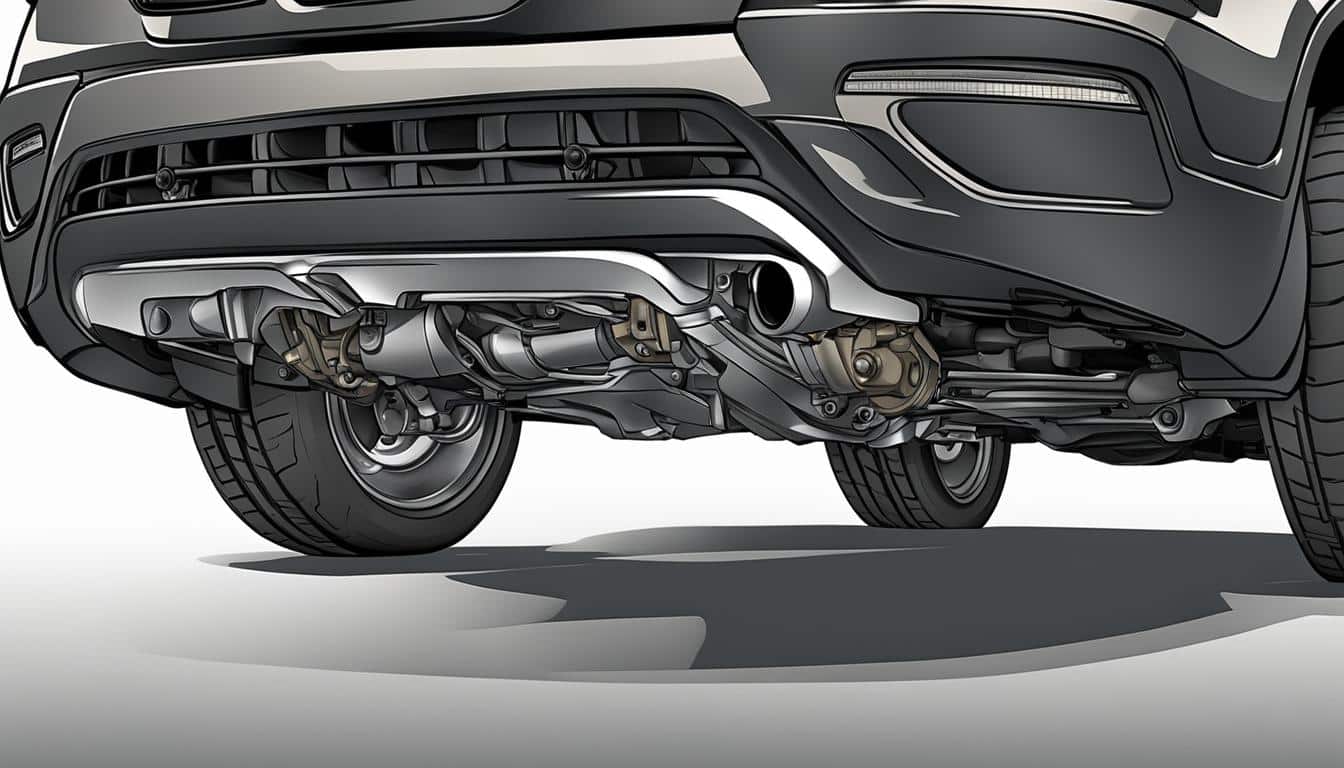The rear differential in your 2008 BMW X3 is a vital component that ensures smooth handling and optimal performance. However, when this crucial part starts making noise, it can be concerning and affect your driving experience. In this article, we will delve into the causes of rear differential noise in the 2008 BMW X3 and explore potential solutions to rectify the issue.
- Understanding the purpose and function of the rear differential is essential in diagnosing and fixing noise issues.
- Common symptoms of a bad rear differential include difficulty in handling, tire damage, vibrations, whining noises, and gear grinding.
- Differentiating between rear differential noise and wheel bearing noise is crucial for accurate diagnosis and appropriate solutions.
- Possible causes of rear differential noise in the 2008 BMW X3 include worn gears, lack of lubrication, misalignment, and faulty U-joints or drive shaft.
- Accurately diagnosing rear differential noise involves a thorough inspection of the differential components, including the U-joints and drive shaft.
Understanding the Purpose and Function of a Rear Differential
The rear differential is an essential component of a vehicle’s drivetrain system. Its main purpose is to distribute engine power to the wheels while allowing for different rotation speeds during turns. This is achieved through a system of gears and bearings that ensure stability and minimize strain on the drivetrain and tires.
The rear differential plays a crucial role in enabling smooth cornering by allowing the wheels on the outside of a turn to rotate faster than the wheels on the inside. This is known as torque distribution. By distributing torque evenly to the wheels, the rear differential helps maintain traction and stability, especially on uneven or slippery surfaces. Without a properly functioning rear differential, handling can become difficult and unpredictable.
In addition to torque distribution, the rear differential also helps to absorb and dissipate forces generated by the drivetrain. This helps reduce the strain on individual components and prolong their lifespan. By minimizing the stress on the drivetrain, the rear differential contributes to overall vehicle durability and performance.
The Components of a Rear Differential
The rear differential consists of several key components that work together to achieve its purpose and function. These components include:
- Gears: The gears inside the differential transfer power from the driveshaft to the axles, allowing for torque distribution.
- Bearings: Bearings support the rotation of the gears and other moving parts, minimizing friction and ensuring smooth operation.
- Seals: Seals prevent lubricating oil from leaking out of the differential and keep contaminants from entering.
- Cover: The differential cover houses the gears and bearings, providing protection and helping to keep lubricant in.
- Lubricant: Differential fluid is used to lubricate the gears and bearings, reducing friction and heat.
These components work in harmony to distribute torque, absorb forces, and maintain the overall performance and stability of the vehicle.
| Component | Function |
|---|---|
| Gears | Transfer power from the driveshaft to the axles for torque distribution. |
| Bearings | Support the rotation of gears and other moving parts, reducing friction. |
| Seals | Prevent oil leakage and keep contaminants out of the differential. |
| Cover | Protects the gears and bearings, helping to retain lubricant. |
| Lubricant | Provides lubrication, reducing friction and heat. |
Understanding the purpose and function of a rear differential is essential in diagnosing and addressing rear differential noise in a 2008 BMW X3. By recognizing the role it plays in torque distribution, stability, and overall vehicle performance, you can better identify potential issues and work towards effective solutions.
Common Symptoms of a Bad Rear Differential
If your 2008 BMW X3 is experiencing rear differential issues, it is important to be able to recognize the common symptoms of a bad rear differential. By identifying these symptoms early on, you can take the necessary steps to address the issue and prevent further damage. Here are some signs that your rear differential may be faulty:
- Difficulty in handling: A bad rear differential can cause your vehicle to feel unstable and difficult to maneuver, especially when making turns.
- Tire damage from increased wear: When the rear differential is not functioning properly, it can lead to uneven tire wear, resulting in the need for premature tire replacements.
- Vibrations in the drive shaft: A worn or damaged rear differential can cause vibrations to be felt in the drive shaft, which can be felt throughout the vehicle.
- Whining noises: One of the most common symptoms of a bad rear differential is a whining or whirring noise coming from the back of the vehicle. This noise may become more pronounced during acceleration or deceleration.
- Gear grinding: If you hear a grinding or clunking noise when shifting gears or while driving, it could be a sign of a damaged rear differential.
If you notice any of these symptoms, it is recommended to have your 2008 BMW X3 inspected by a qualified mechanic who can diagnose the specific issue and recommend the appropriate repairs. Ignoring the symptoms can lead to further damage and more costly repairs down the line.
| Symptom | Description |
|---|---|
| Difficulty in handling | Unstable and difficult to maneuver, especially during turns |
| Tire damage from increased wear | Uneven tire wear, requiring premature tire replacements |
| Vibrations in the drive shaft | Feeling vibrations throughout the vehicle, particularly in the drive shaft |
| Whining noises | High-pitched whining or whirring sounds during acceleration or deceleration |
| Gear grinding | Grinding or clunking noise when shifting gears or driving |
By being aware of these symptoms and addressing them promptly, you can ensure the safe and smooth operation of your 2008 BMW X3. Don’t hesitate to seek professional help to accurately diagnose and repair any rear differential issues you may be experiencing.
Rear Differential Noise vs. Wheel Bearing Noise
When experiencing noise issues in your 2008 BMW X3, it’s important to differentiate between rear differential noise and wheel bearing noise. While these two types of noise may have similar characteristics, understanding the differences can help in diagnosing and addressing the specific issue at hand.
Rear differential noise is caused by problems within the differential itself, such as gear whine, bearing noise, or clunking. It can often be heard as a whining or grinding noise coming from the rear of the vehicle. On the other hand, wheel bearing noise typically occurs when there is a problem with the bearings in each wheel. This type of noise often manifests as a roaring or grinding sound that increases with vehicle speed.
Diagnosing whether the noise is coming from the rear differential or the wheel bearings can be challenging. One way to distinguish between the two is by listening closely to the noise. If the noise intensifies during turns, particularly when one wheel is under greater load, it is likely a rear differential issue. On the other hand, if the noise remains consistent regardless of turns, it is more likely to be a wheel-bearing problem.
Comparison of Rear Differential Noise vs. Wheel Bearing Noise:
| Rear Differential Noise | Wheel Bearing Noise |
|---|---|
| Caused by issues within the differential itself | Caused by problems with the wheel bearings |
| Whining or grinding noise | Roaring or grinding sound |
| Intensifies during turns and load | Remains consistent regardless of turns |
Understanding the distinctions between rear differential noise and wheel bearing noise can help you accurately diagnose the problem and seek the appropriate repair. If you’re unsure about the source of the noise, it’s always recommended to consult with a qualified mechanic who specializes in BMW vehicles.
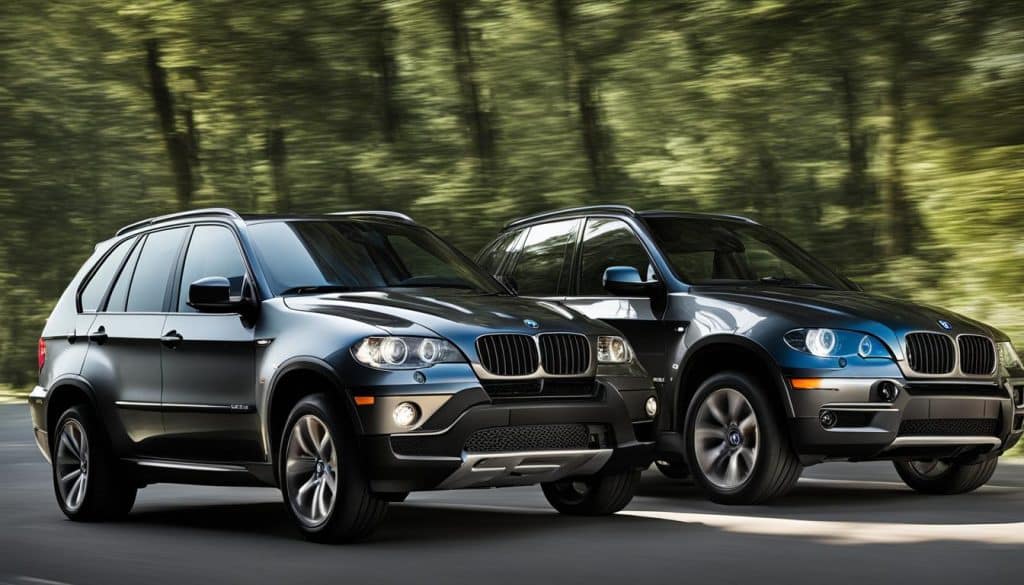
Causes of Rear Differential Noise in 2008 BMW X3
When experiencing rear differential noise in your 2008 BMW X3, it’s important to understand the potential causes behind it. Several factors can contribute to this issue, affecting the performance and overall driving experience of your vehicle.
Gears Wear and Damage:
Over time, the gears in the rear differential can become worn or damaged. This can result from various factors, including normal wear and tear, improper lubrication, or excessive loads on the differential. As the gears deteriorate, they can produce grinding or whining noises, indicating the need for inspection and repair.
Lack of Lubrication:
Proper lubrication is essential for the smooth operation of the rear differential. Inadequate or old lubricant can lead to increased friction and heat, causing the gears and bearings to wear out more quickly. This can result in noise and potential damage to the differential components. Regular maintenance and fluid checks are crucial to prevent this issue.
Misalignment and Faulty Components:
Misalignment of the differential carrier bearing or issues with the U-joints and drive shaft can also contribute to rear differential noise. When these components are not properly aligned or are faulty, they can cause vibrations and abnormal sounds. Identifying and addressing these issues promptly can help restore optimal functioning and eliminate noise problems.
It is important to note that accurately diagnosing the specific cause of rear differential noise in your 2008 BMW X3 requires a thorough inspection by a qualified mechanic. They will have the expertise and knowledge to identify the underlying issues and recommend appropriate solutions for a quieter and smoother driving experience.
Misalignment and Faulty Components- Vibrations
– Abnormal sounds
| Cause | Symptoms |
|---|---|
| Gears Wear and Damage | – Grinding or whining noises – Abnormal vibrations |
| Lack of Lubrication | – Increased friction and heat – Premature wear of differential components |
Diagnosing Rear Differential Noise in 2008 BMW X3
Diagnosing rear differential noise in your 2008 BMW X3 is crucial to finding the root cause and implementing the right fix. To begin the diagnosis, it’s important to conduct a thorough inspection of the differential components. Check for any signs of wear or damage, such as worn gears or misaligned differential carrier bearings. Additionally, examine the U-joints and drive shaft to ensure they are in proper working condition.
Listen for specific noises, like whining or grinding, as they can provide valuable clues about the source of the issue. These noises may indicate problems with the gears, bearings, or other internal parts of the rear differential. By paying close attention to the sounds your vehicle is making, you can narrow down the potential causes and make a more accurate diagnosis.
Consulting with a qualified mechanic is recommended for a proper diagnosis. They have the expertise and experience to thoroughly inspect and diagnose rear differential noise. They may also use specialized tools and equipment to identify the specific issue. With their assistance, you can ensure an accurate diagnosis and reliable repairs for your 2008 BMW X3.
Common Signs of Rear Differential Noise:
- Whining or grinding noises
- Vibrations in the drive shaft
- Difficulty in handling
- Tire damage from increased wear
- Gear grinding
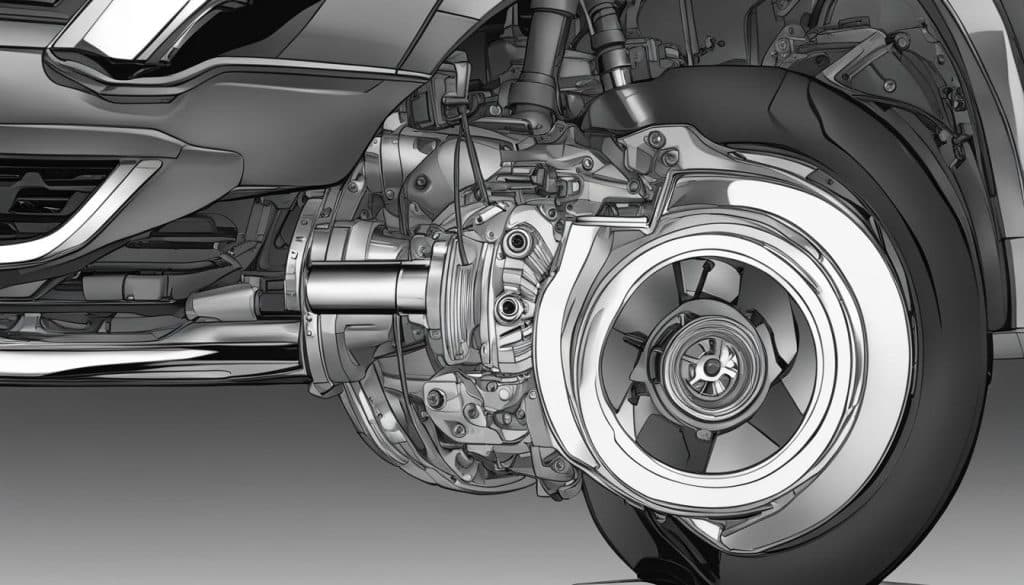
Diagnosing and addressing rear differential noise in your 2008 BMW X3 is essential to maintain optimal performance and prevent further damage. By conducting a thorough inspection, listening for specific noises, and seeking professional help, you can accurately diagnose the issue and implement the appropriate fix. Prompt attention to rear differential noise will ensure a smooth and safe driving experience.
Common Fixes for Rear Differential Noise in 2008 BMW X3
If you’re experiencing rear differential noise in your 2008 BMW X3, there are several common fixes that can help resolve the issue. These fixes address different potential causes of the noise, ensuring a proper repair and restoring optimal performance.
Gear Replacement
One of the main causes of rear differential noise is worn or damaged gears. Replacing these worn gears can help eliminate the noise and restore smooth operation. It’s important to ensure that the replacement gears are of high quality and properly installed for optimal results.
Lubrication
In some cases, rear differential noise may be caused by a lack of proper lubrication. Ensuring that the differential is properly lubricated can help reduce friction and noise. It’s important to use the recommended type and quantity of lubricant for your specific BMW X3 model.
Carrier Bearing Realignment
Misalignment of the differential carrier bearing can also lead to rear differential noise. Realigning the carrier bearing can help resolve the issue and eliminate the noise. This is a more complex repair that should be performed by a qualified mechanic.
U-Joint and Drive Shaft Replacement
Faulty U-joints or a damaged drive shaft can also contribute to rear differential noise. Replacing these components can help eliminate the noise and ensure smooth operation. It’s important to use high-quality replacement parts to ensure durability and optimal performance.
By addressing these common causes of rear differential noise and implementing the appropriate fixes, you can restore the performance and driving experience of your 2008 BMW X3.
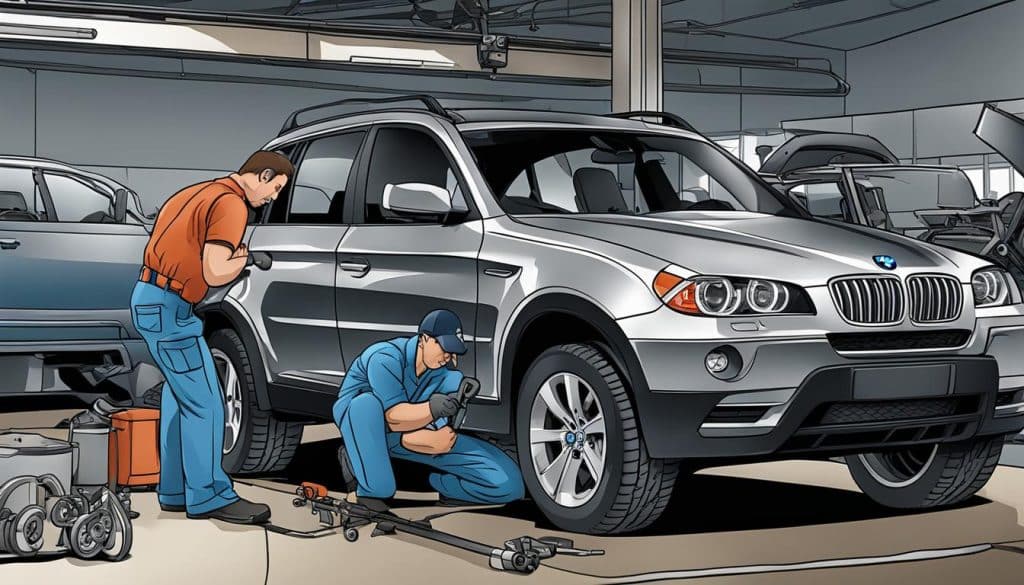
Solutions for Rear Differential Noise in 2008 BMW X3
If you’re experiencing rear differential noise in your 2008 BMW X3, there are several solutions you can consider to address the issue. These solutions aim to restore optimal performance and minimize noise, allowing for a smoother and quieter driving experience.
Regular Fluid Checks and Changes
One of the key maintenance practices for a healthy rear differential is regular fluid checks and changes. The differential fluid helps lubricate the gears and bearings, reducing friction and preventing excessive wear. Over time, the fluid can become contaminated or break down, leading to increased noise and potential damage. By regularly checking the fluid levels and changing it according to the manufacturer’s recommendations, you can ensure proper lubrication and extend the lifespan of your rear differential.
Tire Maintenance
Proper tire maintenance is also crucial in minimizing rear differential noise. Uneven tire wear or improper tire pressure can put added strain on the differential, resulting in noise and potential damage. Regularly check your tire pressure, rotate your tires, and ensure proper alignment to distribute the load evenly and reduce stress on the rear differential.
Alignment and Lubrication
Maintaining proper alignment and lubrication of the differential components is vital in preventing noise issues. Misalignment can cause excessive strain and wear on the gears and bearings, resulting in noise and potential failure. Regular inspections and adjustments by a qualified mechanic can ensure that the differential carrier bearing and other components are aligned properly. Additionally, ensuring that all the necessary components are properly lubricated will reduce friction and noise.
Seeking Professional Help
If you’re unsure about the cause of the rear differential noise or if the solutions mentioned above do not resolve the issue, it is recommended to seek professional help from a certified mechanic with experience in BMW vehicles. They can provide accurate diagnosis and reliable repairs, ensuring that the noise issue is fully resolved and preventing further damage to your rear differential.
By implementing these solutions and following proper maintenance practices, you can minimize rear differential noise in your 2008 BMW X3 and enjoy a smoother, quieter driving experience.
Seeking Professional Help for Rear Differential Noise in 2008 BMW X3
If you’re experiencing rear differential noise in your 2008 BMW X3 and have been unable to diagnose or fix the issue on your own, it may be time to seek professional help. While some fixes can be performed by DIY enthusiasts, certain problems require the expertise of a certified mechanic with experience in BMW vehicles.
Professional assistance is especially recommended if the noise issue is complex or if specialized tools are necessary for the repair. A skilled mechanic can accurately diagnose the problem and provide reliable repairs, ensuring that the noise is fully resolved. They have the technical knowledge and access to the right resources to tackle the specific challenges of your 2008 BMW X3.
By opting for professional help, you can save time and effort that could potentially be wasted on ineffective DIY attempts. Additionally, working with a certified mechanic gives you peace of mind knowing that your vehicle is being handled by someone with the necessary skills and experience.
Remember, addressing rear differential noise promptly is important to avoid further damage and costly repairs. Don’t hesitate to reach out to a professional if you’re unable to resolve the issue on your own. They will ensure that the noise is properly diagnosed and repaired, restoring your 2008 BMW X3 to its optimal performance.
The Importance of Timely Repair for Rear Differential Noise
When it comes to rear differential noise in your 2008 BMW X3, addressing the issue in a timely manner is of utmost importance. Ignoring or delaying the necessary repairs can lead to further damage and costly consequences. By taking swift action, you can prevent the problem from escalating and ensure a smooth and safe driving experience.
One of the primary reasons to address rear differential noise promptly is to prevent additional damage. The rear differential plays a crucial role in distributing torque to the wheels and allowing for independent rotation speeds during turns. When it malfunctions, it can compromise not only the performance of your vehicle but also the overall safety.
Another reason to prioritize timely repair is to avoid expensive repairs down the line. Ignoring rear differential noise can lead to more significant damage to the differential components, drivetrain system, and tires. The longer the issue persists, the more extensive the repairs may become, resulting in higher costs.
Lastly, addressing rear differential noise promptly is essential for maintaining optimal vehicle handling. A malfunctioning rear differential can negatively impact your ability to navigate turns smoothly and can even cause difficulty in controlling your vehicle. By resolving the noise issue promptly, you can restore proper handling and ensure a safe driving experience.
Tips for Maintaining a Healthy Rear Differential
Maintaining a healthy rear differential in your 2008 BMW X3 is essential to ensure optimal performance and prevent noise issues. By following these maintenance tips, you can extend the lifespan of your rear differential and enjoy a smooth driving experience for years to come.
Regular Fluid Checks and Changes
One of the most crucial maintenance tasks for your rear differential is to regularly check and change the fluid. Over time, the fluid can become contaminated or break down, leading to increased friction and wear on the differential components. Consult your vehicle’s owner’s manual for the recommended fluid type and change intervals, and make sure to use high-quality fluid that meets the manufacturer’s specifications. Regular fluid checks and changes can help prevent noise issues and ensure smooth operation of the rear differential.
Proper Tire Maintenance
Tire maintenance plays a significant role in the health of your rear differential. Keep your tires properly inflated to the recommended pressure to ensure even wear and minimize stress on the differential. Additionally, regular tire rotation can help distribute wear more evenly, reducing the strain on the differential components. Be sure to follow the manufacturer’s guidelines for tire rotation intervals to optimize the performance and longevity of your rear differential.
Periodic Inspections for Wear and Damage
To catch any potential issues early on, it is important to conduct periodic inspections of your rear differential for signs of wear or damage. Look for any leaks, unusual noises, or excessive play in the drivetrain components. Pay attention to any changes in handling or vibrations that could indicate a problem with the rear differential. If you notice any abnormalities, it is recommended to consult with a qualified mechanic for a thorough inspection and necessary repairs.
Proactive Steps for Optimal Performance
In addition to regular maintenance tasks, there are several proactive steps you can take to maintain a healthy rear differential. Avoid excessive towing or carrying heavy loads, as this can put additional strain on the differential components. Also, be mindful of your driving habits and avoid sudden accelerations or aggressive turns that could cause unnecessary stress on the differential. By taking these proactive measures, you can help prevent noise issues and prolong the lifespan of your rear differential.
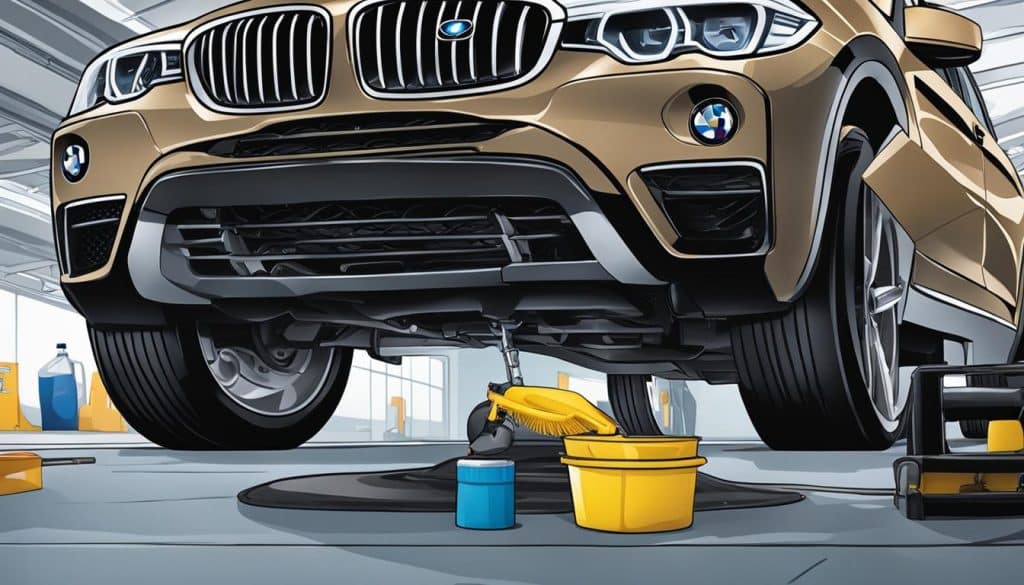
Conclusion
In conclusion, if you are experiencing rear differential noise in your 2008 BMW X3, it is important to address the issue promptly to prevent further damage and costly repairs. The causes of rear differential noise can vary, including worn gears, lack of lubrication, misalignment, or faulty components.
To resolve the noise problem, it is recommended to seek professional help from a certified mechanic with experience in BMW vehicles. They can accurately diagnose the issue and implement the appropriate repair, ensuring your rear differential is restored to optimal performance.
Additionally, maintaining regular maintenance practices can help prevent future rear differential noise. This includes following the manufacturer’s recommendations for fluid checks and changes, maintaining proper tire pressure and alignment, and performing periodic inspections for wear and damage.
By taking proactive steps and addressing rear differential noise in a timely manner, you can maintain a smooth and safe driving experience with your 2008 BMW X3. Don’t let the noise persist – get your rear differential repaired and enjoy the quiet ride you deserve!
